Frankfurt Airport Terminal 3
A place to feel good
The new Terminal 3 in the south of Frankfurt Airport is taking shape. The new departure hall is designed to combine functionality with aesthetics. The coloured exposed concrete elements in natural tones create a warm, lounge-like atmosphere. Around 320,000 cubic meters of concrete have already been used. The cement required for this was supplied by Heidelberg Materials.
Getting the terminal buildings ready for takeoff
With the completion of gate G, as the first of three gates, an important milestone was reached in 2022. From mid-2023 it will be connected to the new main terminal building 3 with gates H and J. All three gates are scheduled to be operational in 2026. For Dr. Stefan Schulte, Chairman of the Executive Board of Fraport AG, this is exactly the right time. Because by then, the passenger level of 2019 will be reached in Frankfurt again, i.e., the same travel volume as in the period before the Covid 19 pandemic, which was more than 70 million passengers per year. The CEO gave this assessment in his speech to the Annual General Meeting in May of this year.
Meanwhile, construction work continues around Terminal 3, and the main building continues to take shape. For example, the huge roof covering an area of two and a half soccer fields is being installed over the departure hall. Since the beginning of last year, the construction teams have been in the process of technically expanding the two gate H and J. As the shell construction phase is almost complete, it is now time to take stock.
Optimal planning, mixing and pouring for building at full speed
The go-ahead for plant operations was given as early as the beginning of 2020, and things really got going, according to Daniel Butterfaß, plant manager at Godel Beton, in March 2020, when the large concrete slabs were poured. "Ironically, that was exactly the time when the pandemic forced everything into lockdown. That's when our operations were running at full speed. Once, in a 48-hour concrete pour, we mixed about 4,200 cubic yards at one time."
In total, we have mixed and placed more than 320,000 cubic meters of concrete in the past two and a half years. This corresponds to a material volume of around 700,000 tons that has passed through the two mobile mixing plants. For a mobile plant, that's an impressive performance.
Daniel Butterfaß, Plant Manager Godel Beton
During this labor-intensive phase, it became clear how important functioning logistics is. In particular, the strategy of storing around 10,000 tons of aggregate in stockpiles proved to be a stroke of luck, because in this way even large concrete pours at a stretch could be buffered well. In other respects, too, every link in the supply chain withstood the load in the best possible way. Starting with the wheel loader driver, who moved up to 400 tons of sand and gravel every hour, and continuing with the 15 truck mixers that delivered the concrete on time to the various paving sites on the site.
Ordering cement online through Hub was a game-changer
Heidelberg Materials' customer portal Hub, which Butterfaß and his team used to place and track cement orders online, proved to be extremely useful. No other building materials provider offers such a service. In the meantime, Godel is also using Hub on other construction sites, for example in Stadt-Allendorf (the A 49 engineering structures) and in Stuttgart (the airport tunnel).
The software is very clearly designed, which speeds up order processing and simplifies the whole ordering process. As a result, we are always supplied with cement with pinpoint accuracy.
Daniel Butterfaß, Plant Manager Godel Beton
A functional and delightful airport terminal experience
During the tour, the architectural concept of the terminal, which optimally combines function and aesthetics, becomes apparent to the viewer. With Terminal 3, architect Christoph Mäckler did not want to create a transit building, but a city building. While the backbone of the buildings is made of concrete, steel and glass dominate the gate rooms, thus ensuring maximum natural daylight. But the exposed concrete, aesthetically coloured and shaped into beautiful columns and arches, also decorates the departure lounge in an appealing way. The elements in warm natural tones create a pleasant, lounge-like atmosphere and put travellers in the mood for their vacation. But it's not just the travellers themselves who will be delighted. The marketplace in the center of Terminal 3, with its numerous boutiques and stores, will also attract plenty of shopping fans.
Dr. Georg Haiber
Originally published in German in context • Das Magazin von Heidelberg Materials • Dezember 2022
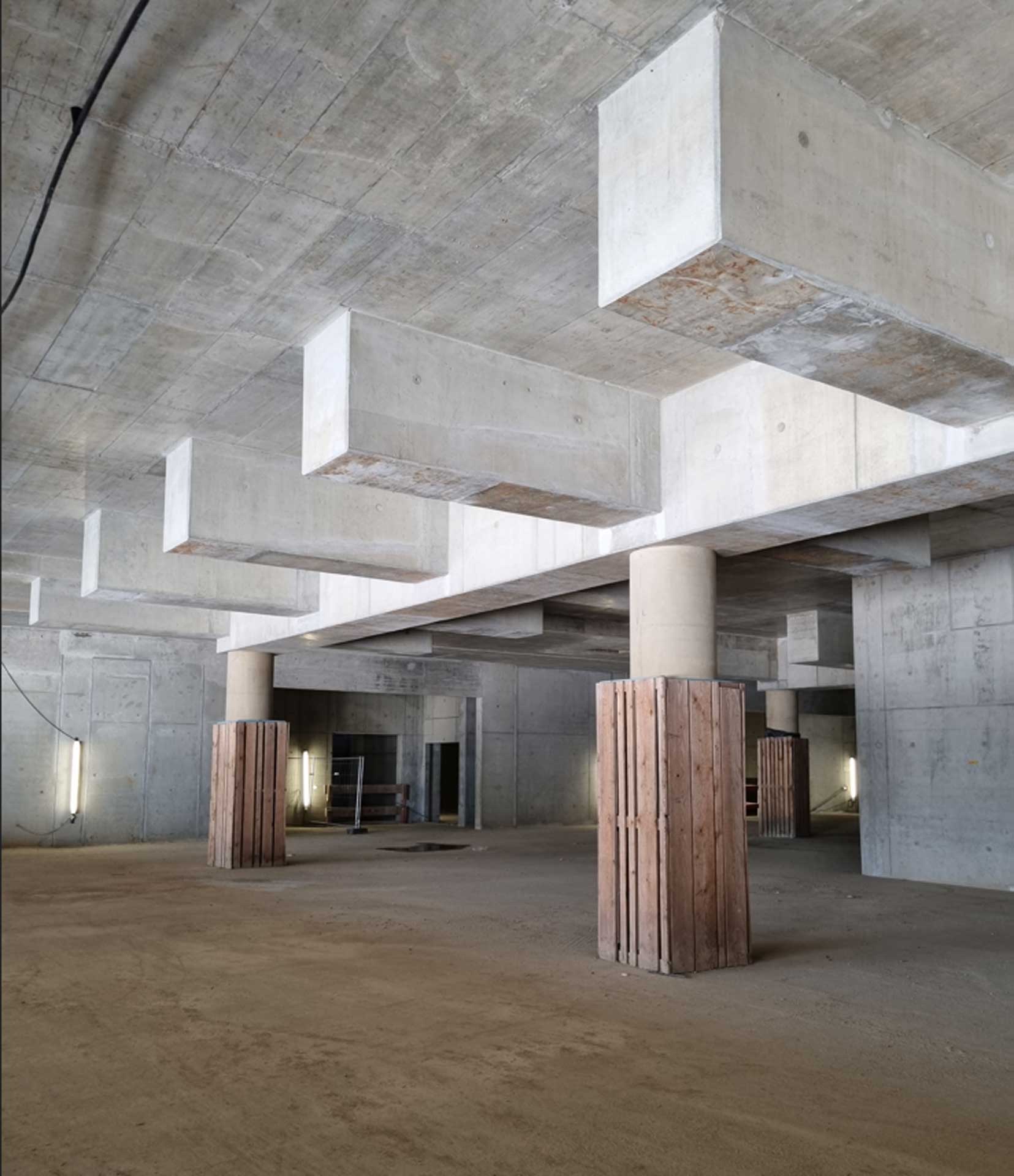
Airport Shell Building. The shell of the building already gives an idea of the aesthetic effect of the exposed concrete.
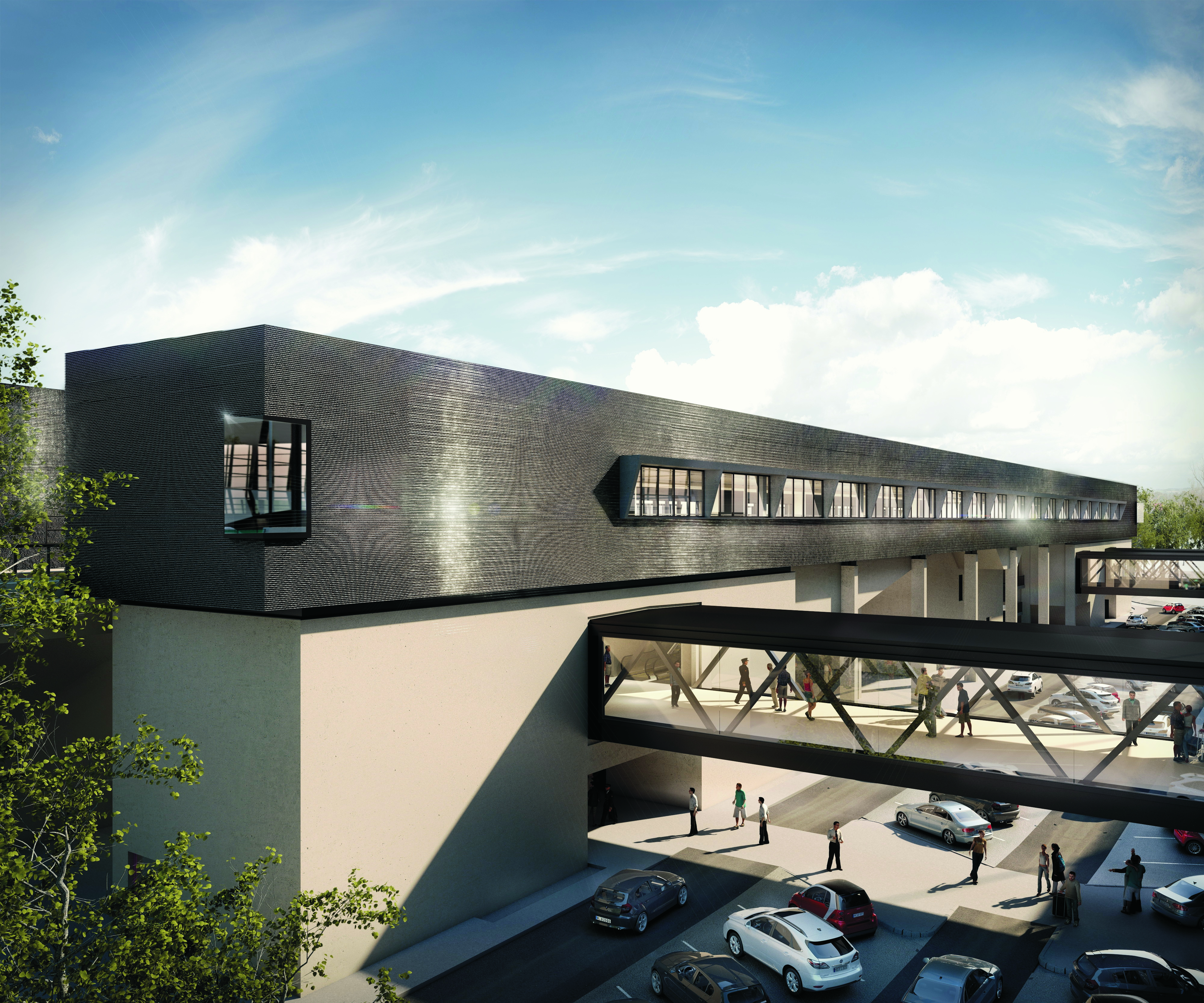
Airport PTS Station.
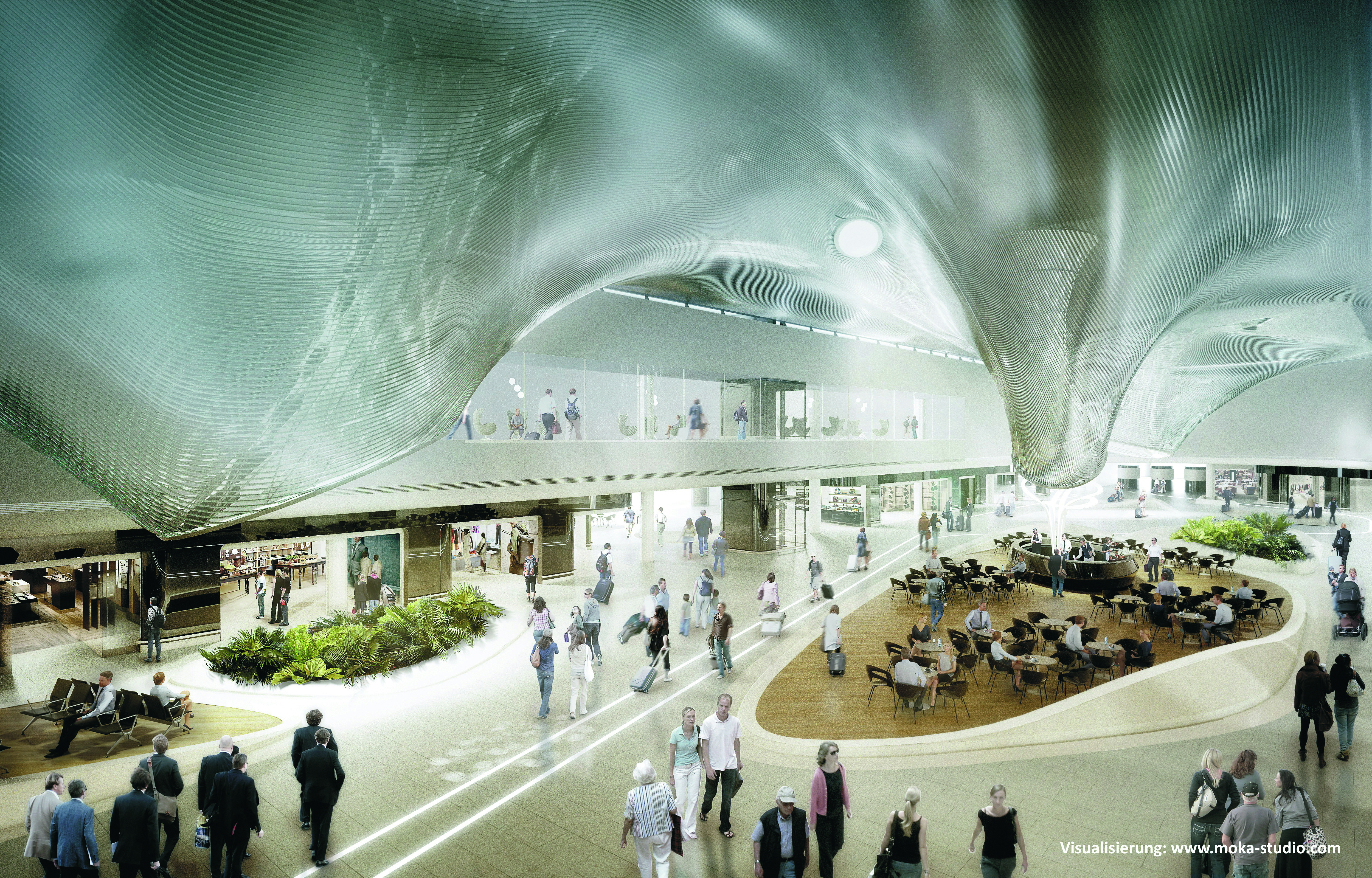
Airport Market Square.
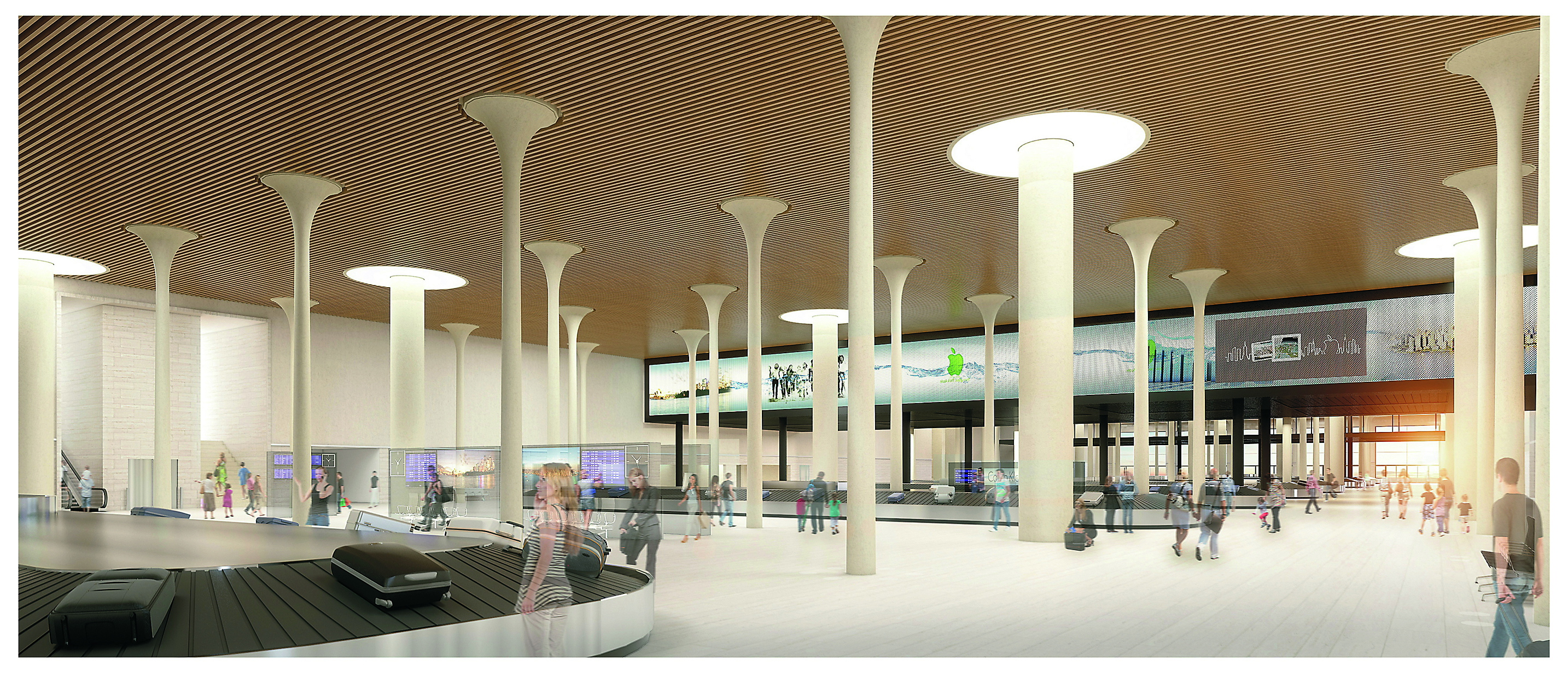
Airport baggage claim.
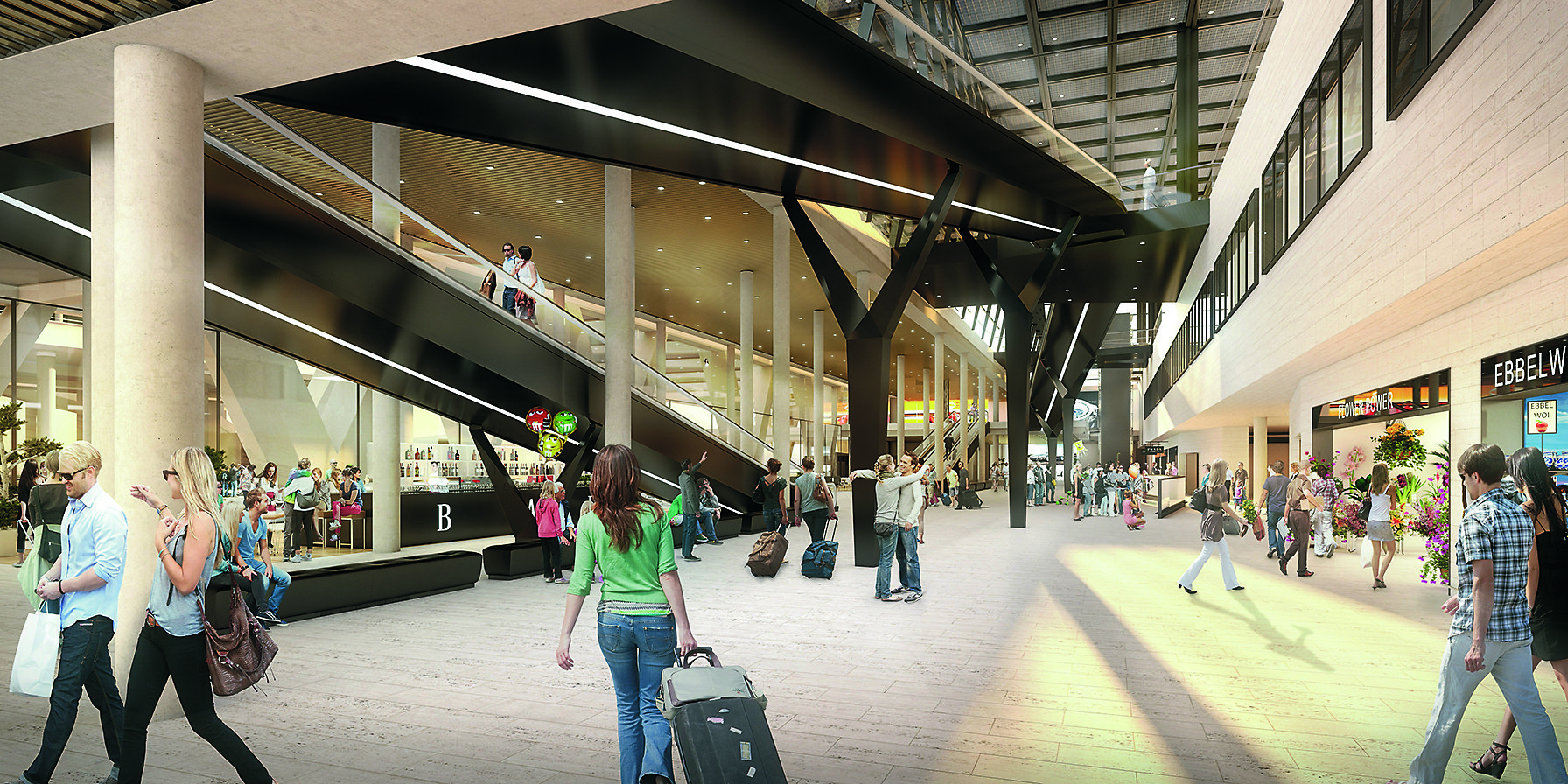
Airport Arrivals Hall. The warm colors of the exposed concrete elements promote the vacation feeling of the travellers.

Airport Shell Building. The shell of the building already gives an idea of the aesthetic effect of the exposed concrete.

Airport PTS Station.

Airport Market Square.

Airport baggage claim.

Airport Arrivals Hall. The warm colors of the exposed concrete elements promote the vacation feeling of the travellers.
